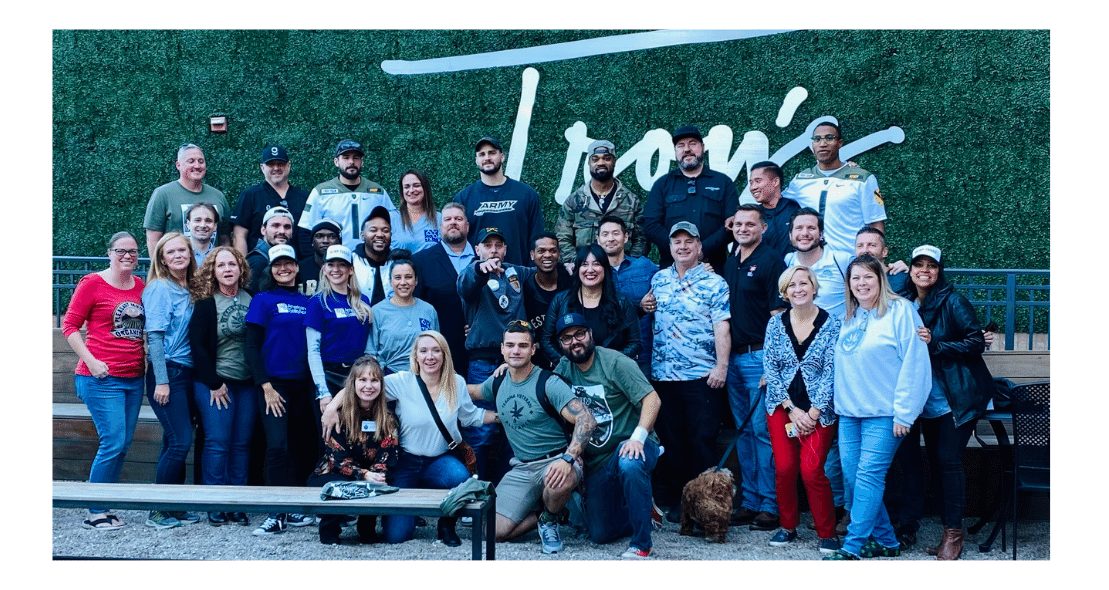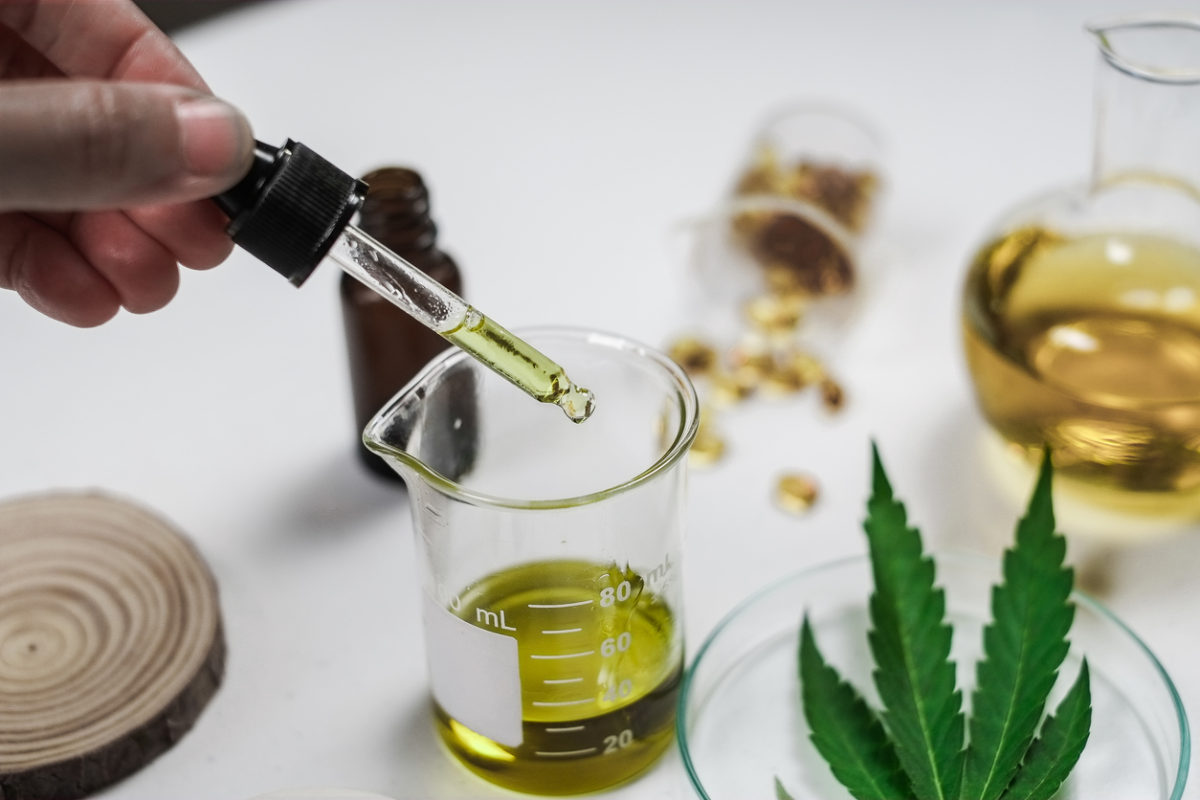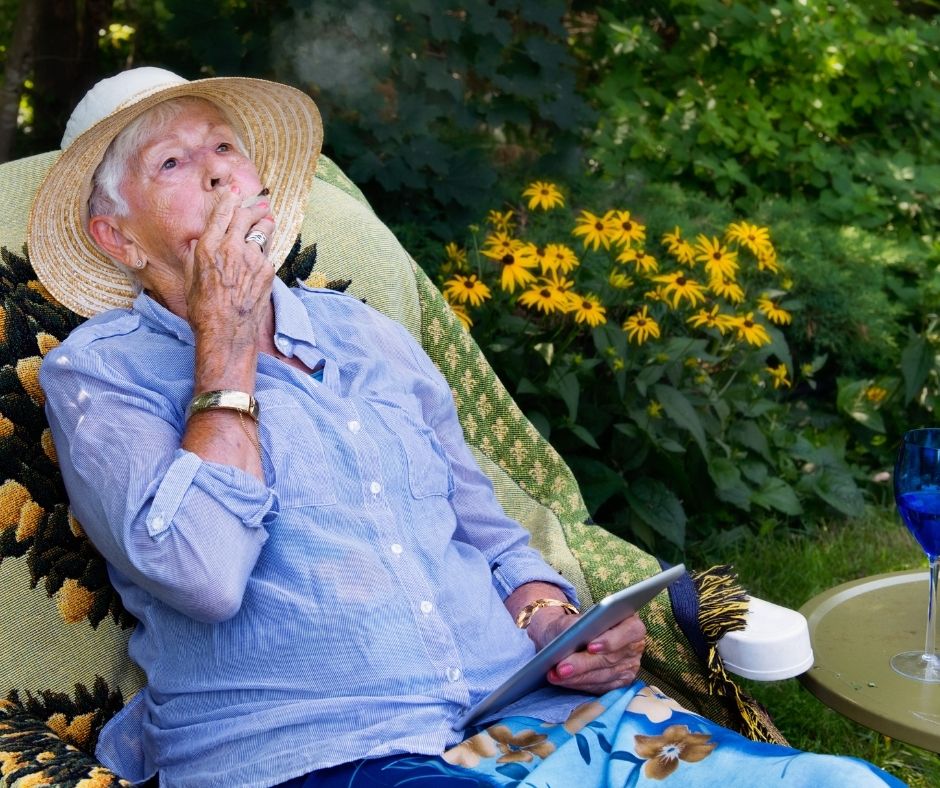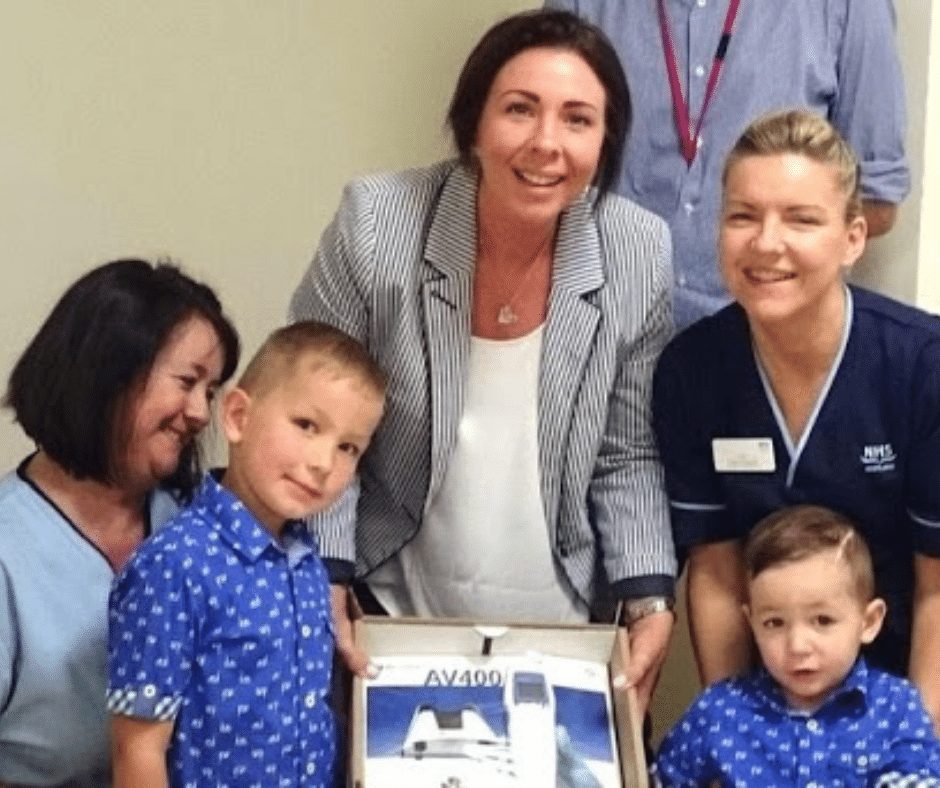There are few times when we’ll get adamant about the importance of “rules” in your cannabis journey – but this is one of those times – CLEAN your gear and keep it clean.
Continue readingCannabis Suppositories: What You Need to Know
Legalization of medical cannabis continues to spread to additional states in our nation and while that’s something many using cannabis as medicine are excited about, for those who are new to cannabis more often than not, these new patients are looking for options that don’t include smoking or are seeking specific methods of use that target conditions via specialized product types. Cannabis suppositories are one such option that exist in select markets.
Today, consumers and patients alike are considering the use of suppositories to manage localized conditions of the reproductive and gastrointestinal systems. Those who have used infused suppositories and report the effects and their experiences are indicating that they’ve found relief from women’s health issues as well as helping with sexual health.
Women are using them vaginally and rectally and men are using them rectally as well. For women diagnosed with endometriosis it’s important to do their due diligence and ensure they are utilizing the right cannabinoids when using or making suppositories. CBD can prevent the endometriotic cells from migrating outside the reproductive system, but THC can actually cause the migration of endometriotic cells into other systems and could further worsen their symptoms. (McHugh, D., 2012) Also, important to note that most suppositories available on the market are not gender-specific unless other botanicals have been added that a particular gender would want to avoid.
Although suppositories are sometimes the only option for those who cannot take anything by mouth or inhale, for example hospice patients, infants, or those with severe nausea or neurological conditions, were not sure how effective they are and if they provide overall systemic benefits because of the limited absorption and bioavailabilty. (ElSohly, M., 2018)
For those not familiar with bioavailability, it’s a fancy word for how much of the CBD or THC you consume your body will actually be able to access and use. For example, let’s say a person consumed 100mg of CBD via inhalation or a sublingual tincture, it’s possible that as little as 30% of that will be used by the body. Some report that the bioavailability of vaginal and rectal suppositories is as low as 0-10%. One company has a patented cannabis suppository that reports a bioavailability of up to 80%, but this version by ElSohly can only be made by the University of Mississippi, not manufacturers in your home state. There may seem to be a coincidence that the company with the patented version reported the very low bioavailability of other versions mentioned above, but Perlin, E. & et al came to the same conclusion in 1985.
So what does this tell you? That cannabis suppositories are likely a better option for managing local symptoms of the gastrointestinal system and the women’s reproductive tract. We have male patients using them for ulcerative colitis or crohn’s and women using them for painful periods or to promote comfort during sex.
If you’re ready to try cannabis-infused suppositories, do your homework, talk to your medical professional, and be aware that suppositories may not be the best form of treatment for specific medical conditions. Cannabis physician and expert, Dr. Bonni Goldstein states that suppositories should not be used when a patient is undergoing chemotherapy because of the compromised immune system and risk of infection. (Goldstein, B., 2020)
At Cannabis Care Team, when we discuss the use of cannabis suppositories with patients we share a few best practices and how to save money on their treatment is always one of them. The best way to save money on cannabis suppositories is to make them yourself. Check out this recipe using a concentrated version of THC purchased from a medical dispensary, How to Make Marijuana Suppositories at Home | Massachusetts Medical Marijuana Doctors: Inhale MD or simply add a full-extract THC or CBD cannabis oil to cocoa butter or coconut oil (the kind that is solid at room temperature), mix well, add the mixture to suppository molds that can be purchased online, freeze or refrigerate, and keep there until ready to use. Insert above the rectal sphincter (about an inch) so it doesn’t fall out, and lay down for at least 15-30 mins to prevent leakage.
We hope this answered some questions, but for specific education regarding your personal healthcare needs, don’t hesitate to reach out to 888-810-WELL (9355), and always remember information on our site is provided for general informational and educational purposes only. It is not a substitute for professional medical advice. Before taking any actions based upon such information, we encourage you to consult with your personal health care provider.
References:
ElSohly, M., Gul, W., & Walker, L. (2018). Pharmacokinetics and Tolerability of Δ9-THC-Hemisuccinate in a Suppository Formulation as an Alternative to Capsules for the Systemic Delivery of Δ9-THC. Medical Cannabis and Cannabinoids, 1(1), 44–53. https://doi.org/10.1159/000489037
Goldstein, B. (2020). Cannabis Is Medicine: How Medical Cannabis and CBD Are Healing Everything from Anxiety to Chronic Pain (1st ed.). Little, Brown Spark.
McHugh, D., Page, J., Dunn, E., & Bradshaw, H. (2012). Tetrahydrocannabinol and n-arachidonyl glycine are full agonists at GPR18 receptors and induce migration in human endometrial HEC-1B cells. British Journal of Pharmacology, 165, 2414-2424. Doi:10.1111/j.1476-5381.2011.01497.x.
Perlin, E., Smith, C. G., Nichols, A. I., Almirez, R., Flora, K. P., Cradock, J. C., & Peck, C. C. (1985). Disposition and bioavailability of various formulations of tetrahydrocannabinol in the rhesus monkey. Journal of pharmaceutical sciences, 74(2), 171–174. https://doi.org/10.1002/jps.2600740213
Online, On-Demand CCT Certification
Cannabis Care Team brings their successful in-person training to you online
April Hatch is a cannabis nurse. She’s also a mom, a daughter, a wife, and a career-minded professional. When one of her own children was the victim of a traumatic brain injury, April became determined to bring together all of the many roles she fills each day into a career that “traditional” clinicians would have scoffed at just five short years ago.
It was then that April and her mom, Heidi, decided there was a great need for cannabis education – for EVERYONE. Cannabis patients in medical markets, cannabis consumers in all markets, regardless of legality, and cannabis industry professionals are all clamoring for more education about the potential of a plant that has been around for centuries, but found itself the target of a continuing struggle with prohibition and stigma for most of the 20th century. Thus the need for and the creation of the Cannabis Care Team (CCT).
Since 2019, the Cannabis Care Team has devoted themselves to educating everyone from patients to families, operators to budtenders, alternative medical professionals to the most reserved clinicians. In just 2 short years, CCT has conducted over 350 private patient consultations and trained over 250 industry professionals. Our in-person training has been lauded as the most comprehensive training available for budtenders and our dedication to interactive training and content and styles that appeal to adult learners has proven to be rewarding and has furthered our mission exponentially.
With the onset of the pandemic in 2020 and the continuation of safety concerns still present today, coupled with the frequent turnover in the industry and the growing number of licenses operators scaling up across the nation, it became our loftiest goal yet – take our engaging content and make it available online!
With that in mind, we’ve spent the past year developing eLearning content that can provide evidence-based education for the cannabis industry regardless of geography. We’re pleased to announce that our new online training will be hosted by upLVL, Inc. We chose upLVL because their mission is to elevate the cannabis industry and inspire confidence in its workers. upLVL’s learners gain a better understanding of the marijuana industry and become more confident as certified retail employees. upLVL works with the highest quality course publishers and assures we work together to deliver engaging and relevant content that is valuable for continuing education in this market that continues to change swiftly.
Ready to learn more about CCT’s online learning?
Hemp for Victory
As the granddaughter, daughter, niece, cousin, and friend of veterans I have seen first-hand the sacrifices made to fulfill an internal patriotic duty and unfortunately the consequences too.
However, what I have seen pales in comparison to the tragedy a group of veterans I recently spent time with have experienced. This group of veterans, so determined to make cannabis accessible for vets, that they decided to start the conversation in Texas. Arguably, the most difficult state to become qualified for medical cannabis in, with only two dispensaries serving a state that took my family and I twelve hours to drive across.
West Point graduates, a Major General, Army, Navy, military physicians and nurses. All there for one cause, cannabis. As they began to share their stories, they spoke of opiate addiction, the VA’s ineffective treatment of PTSD, and the all too many vets they’ve known who have taken their own lives.
Much different than the industry meetings and scientific conferences I frequent, you could feel the suffering. They weren’t there to talk about sales projections or results of studies, they were there to talk about how cannabis could have healed their friends. Although the losses were vast the energy the group had was greater. These were folks who were not going to stop until cannabis was an option for every soldier. These are the leaders that will make a difference.
The next event will be held in Kansas City, MO on April 19, 2022 so stay tuned to our social media pages for updates.
Much love,
April
What’s the Difference between Hemp CBD & Cannabis CBD?
Hemp and Marijuana (Cannabis) plants both belong to the Cannabaceae family, Cannabis Sativa L species, but have vastly different uses. Hemp grows extremely fast and is used industrially to make paper, rope, textiles, and is even being used to make building blocks called hempcrete. Back in 1941, Henry Ford actually made a car from Hemp that ran off Hemp Ethanol!
Hemp CBD has to have a THC content of 0.3% or less to be legal. Marijuana, which I prefer to call Cannabis, is used for medicinal purposes and so-called “recreational” use. I like to consider that “adult use,”; i.e., adults who prefer to use Cannabis for relaxation, creativity, stress reduction, etc.
While both are called CBD (Cannabidiol), there is a difference between CBD products made from Hemp and those made from Cannabis. Both plants have terpenes, flavonoids, and other cannabinoids, but some hemp has a lower quantity of them. Cannabis CBD is cultivated to have high CBD content and THC below the 0.3% legal threshold. Because of its’ higher terpene, flavonoid, and other cannabinoids content, CBD-rich Cannabis is a much better choice for those who want a non-impairing medicinal benefit.
There are three types of CBD: Full Spectrum, Broad-Spectrum, and Isolate:
Full-Spectrum is extracted from flower and trim and contains the full array of cannabinoids & terpenes present in the hemp/cannabis flower, including THC. Science suggests this form of CBD is best for people who have no known issues with minuscule amounts of THC.
Broad-spectrum CBD products have NO THC present in the final product as the extract is processed to remove all THC. It’s suitable for people with a high sensitivity to THC. It also contains compounds and other cannabinoids from the Cannabis plant like CBC, CBN, and terpenes.
Isolate CBD is 99% pure and contains ONLY CBD. Isolates don’t include additional cannabinoids or other compounds, like terpenes, flavonoids, and other cannabinoids found in the Cannabis plant. The research indicates it’s not as effective as Full and Broad-Spectrum CBD due to their absence. However, for some people, this is a better choice.
Warning! Buying online from unknown companies can be risky due to the FDA’s lack of regulation and oversight! Recent study results on 240 CBD products purchased online, at gas stations, and grocery stores showed 70% were highly contaminated and contained exceedingly high lead levels. Some had other drugs added, i.e., cough syrup, synthetic cannabinoids, melatonin, etc. In 50% of the CBD tested, the dosage stated on the bottle didn’t match the contents; some contained NO CBD at all!
Taru Fisher, Healer Certified Medical Cannabis Wellness Advisor, NLP Health Practitioner & Coach
Copyright 2021 Jean Taru Fisher
Posted with permission
If you are looking for a reputable CBD company, please don’t hesitate to give us a call!
How Do I Take Medical Cannabis?
Each method of consuming cannabis medicine has its own effect, even when using the same strain of cannabis. Why? Well, different methods involve different physiological pathways.
There’s no best delivery method as each has its usefulness, drawbacks, and therapeutic effects in certain situations. Here are the most common methods for consuming cannabis medicine.
Inhalation: Onset 1-5 minutes; Duration 1-6 hours
- Smoking it OR preferably, inhaling vaporized flower
Positives: fast onset creates ease in consuming your correct dosage and it’s convenient. It’s also ideal for people with nausea, vomiting or other conditions that make swallowing difficult.
One drawback is that inhaled cannabis is more likely to cause cardiovascular side effects, has a shorter duration, and a higher abuse potential.
Herbal vaporizers using cannabis flower are considered a healthier way to consume cannabis because it greatly reduces the number of harmful substances created compared to smoking. The vapor produced is warm and non-irritating, with little to no smell.
Ingestion by Mouth: Onset within 1-2 hours; Duration 4-12 hours
- Edibles – Cannabis added to food or drink
- Capsules
- These are absorbed through your GI tract and then metabolized by your liver
- Ingestion changes cannabinoids into a form with longer duration of action
Be very cautious when consuming edibles; start with an extremely small amount like 1 -2 milligrams. To avoid unpleasant after-effects, wait at least 2 hours before ingesting a second dose. If this small initial dose does what you want it to do, stick with it and don’t add another dose. If the effect isn’t strong enough, the next time you consume it, up the dose slightly by only 1 – 2 milligrams and continue to do so until you get a therapeutic effect. People new to cannabis should start SLOWLY with edibles.
Liquid Cannabis Extracts: Onset 10-45 minutes; Duration 2-8 hours
- Taking liquid extracts; tinctures or oils absorbed through the mouth or swallowed
- Measure carefully using the metered dropper provided with the bottle and place it in your mouth under your tongue; wait 60-90 seconds before swallowing
One of most versatile methods, this method works well for most people
- Convenient, discreet and easy to dose correctly
Topicals (External; on skin): Onset and Duration Variable
- Applying cannabis lotions, salves or patches to the skin
- Many can be made at home to alleviate pain, muscle spasms, inflammation, itching and various skin conditions
- Topicals do not typically produce psychoactive effects
- “Transdermals” – are a medicated patch you place on the painful body part, have better absorption and will have full body effect. However, they can cost more than other methods.
Raw Cannabis (THCA): Onset 2-45 minutes; Duration 2-8 hours
- It does NOT produce psychoactive effects; it’s the raw (Acidic) plant material
- It has a higher terpene content and a broad range of therapeutic benefits for conditions such as arthritis, epilepsy, chronic pain, digestive disorders
- Typically taken by mouth in a tincture or spray
- Fresh raw cannabis flowers can be eaten directly, prepared into an oil, made into “canna cubes” or brewed into a tea
Rectal (Cannabis Suppositories): Variable Onset & Duration
- These can be useful for treating pain in pelvis and low back
- They can also be used for people unable or prefer not to inhale or swallow cannabis
- Limited research shows a wide variability in absorption
Be sure to consult with a qualified Medical Cannabis healthcare provider as well as your personal healthcare provider for more information and assistance.
Taru Fisher, Certified NLP Health Practitioner & NLP Coach
Healer Certified Medical Cannabis Wellness Advisor
Copyright 2021 Jean Taru Fisher
Used with permission
Elders & Cannabis
I use the term instead Elder rather than “Senior” or “Boomer” because for me, the title of Elder represents the wise Elder of our human Tribe. Indigenous peoples revere their elders for their knowledge, common sense, and their wisdom gathered over the years. “Senior” is overused and undervalued, and Boomer has become a term of derision on social media. I am very proud to be considered an “Elder” in our society!
Now that I’ve cleared that up, let’s move on to cannabis use and Elders.
Why would an Elder want or need to use cannabis? Perhaps a family member or friend has mentioned their success using it, or they read the recent AARP statement declaring their support of medical cannabis. If you are an Elder, chances are you’ve heard of cannabis (marijuana) and may have even tried it when you were younger. You may even be using it now.
A recent study in the Journal of the American Medical Association1 shows a significant increase in the numbers of people 65 and over who use cannabis; in the United States cannabis use increased sharply from 0.4% in 2006 and 2007 to 2.9% in 2015 and 2016.
Adults with a chronic disease, diabetes, had a 180% relative increase in use in 2015. People with 1 or less chronic diseases also had a very significant increase of 95.8% in cannabis use.
They also found an increase in cannabis use by alcohol-using older adults, a trend that bears watching and education about the harm that can arise from using these two substances together.
While the stigma around marijuana that was deliberately created in the early 1900’s still remains but is lessening, multiple cases of anecdotal evidence exist showing it is helpful for relieving insomnia, chronic pain, neuropathy, anxiety, and reducing the overuse of opioid medications and other painkillers, among many others.
There are impairment risks associated with cannabis use in older adults which are dependent on dosing, which cannabis products are being consumed, and how you take them. Some of these are dizziness, lightheadedness and thinking or perception disorders. These can be avoided or relieved with education about dosages, methods of ingestion, and techniques for dampening the unwanted side effects should they occur.
Elders need to become educated about cannabis and find knowledgeable medical professionals who can assist them in their cannabis journey. We Elders so often have several health conditions being treated with multiple drugs, it is very important for us to have sound medical advice about our medical cannabis use to avoid dangerous drug interactions. Of particular concern are blood-thinners and anti-seizure medications. Always inform your medical providers about your cannabis use so they can check for drug interactions, potential problems, etc.
I’ve included a link to Dr. Dustin Sulak’s handout, Healer Medical Cannabis Healthcare Provider Info booklet, https://healer.com/landing/provider-cannabis-guide/. It will be invaluable for helping your healthcare provider understand medical cannabis usage.
Taru Fisher
Healer Certified Medical Cannabis Wellness Advisor
NLP Health Practitioner and NLP Coach
© 2021 Jean-Anne Taru Fisher
Used with Permission
1 Trends in Cannabis Use Among Older Adults in the United States, 2015-2018 | Geriatrics | JAMA Internal Medicine | JAMA Network
Missouri Medical Refuge
Abby Rowe, medical refuge from Missouri could be in good company as patient counts surpass 100k in her home state.
What does set Abby apart from many of the other patients is the rare connective tissue disorder she suffers from called Ehlers-Danlos Syndromes. The Ehlers-Danlos syndromes (EDS) are a group of hereditary disorders of connective tissue that are varied in the ways they affect the body and in their genetic causes. The underlying concern is the abnormal structure or function of collagen and certain allied connective tissue proteins. The disorder, among other ways it ravages its sufferers, causes progressive pain, fatigue, and skin problems.
In an interview in May, Abby said, “In college, the physicality of going to class and studying in the library really started to take a toll on me. My doctors didn’t know how to treat me; it was a disease that they didn’t know much about.” She adds, “Now they know so much more, but at that point, they didn’t.” Abby clarifies that at this point in her early college experience, she was confused and suffering without guidance or understanding from many.
After a mutual friend suggested that she talk with a medical cannabis advocate, she started to open up to the idea of cannabis as medicine. It did benefit her. In fact, she eventually got off the other drugs that she says, “I didn’t need anyway,” and that were lowering her standard of living, causing her to live in a haze. She replaced those drugs with medical cannabis. But shortly after, a doctor told her she needed to seek alternative medicine and suggested she move to Colorado in order to legally medicate.
Abby ultimately made the decision to move so that she could seek the medical care that she desperately needed. She recalls that people called her a “medical refugee” when she moved from Missouri to Colorado around 2013. After five years, she then moved to New Hampshire, where she has been for nearly two years, another state in which medical marijuana is legal.
While she has found legal and safe access to medical cannabis in a different state, Abby looks forward to coming back to Missouri once marijuana is accessible. Given Missouri’s recently legalized medical cannabis program and slow-moving progress will soon ramp up as operators continue to come online and become fully operational. Abby hopes to come back to the state she loves once her needs can legally be met.
Success in Scotland
We’ve read stories of patients in the UK who continue to struggle with access to cannabis as medicine, and now Scotland is garnering headlines for the same kind of conflict for patients. At 39, Lisa Quarrell is embroiled in a fight for medicine for her son Cole Thomson who, at age 8, suffers from uncontrollable drug resistant focal epilepsy. Cole’s private prescription for cannabis oil, which currently must be imported to the UK by a single provider in the Netherlands. Not only does the required import mean having to navigate legalities, but the oil costs the family over £1,000/month.
As a result of the stress of trying to legally secure her son’s life-saving medicine, Lisa started a petition to further pressure the Scottish government into putting together a fund so that parents aren’t out thousands of pounds out of pocket to save their children’s lives. Thus far, Cole’s own medical costs have been helped with fundraising and the generosity of strangers to be able to afford the medicine. Like every cause in the world right now, the pandemic has made these efforts extremely difficult.
“Cole had brain surgery when he was two and has tried 20 medications since he was three months old. He was given a prescription for Epidiolex, the UK only licensed CBD product but his health continued to decline. I now have a private prescription for Cole for a Bedrolite oil which is whole plant oil and he is the best he’s ever been. Cole almost died in March and thanks to this oil he’s thriving.
“I took Cole to meet Jeane Freeman in July 2019 and asked her to watch a video on my phone. I said this is what I have to look at 20 times a night cause my baby was dying without access to these oils. I need you to help me get it through a funded prescription. But she refused to watch the video.”
Lisa cited examples of patients in England and Northern Ireland who have fully funded prescriptions on the NHS and has asked why it is appropriate for her son to miss out when solutions have been found elsewhere in the UK. Unfortunately, the response from the Scottish lawmakers was as follows, “These are undoubtedly extremely difficult cases, which are distressing for patients and their families. However, it would be inappropriate for ministers to intervene in decisions on the treatment or funding for individual patients, for which we must trust clinicians and the NHS.
“It is solely a decision for the patient, or the patient’s carer, whether or not to seek private treatment. Where they do so, they are responsible for paying any costs incurred. Our health system, the NHS, is a publicly funded service and it would not be appropriate to redirect that public funding from the health service in Scotland to private care.”
That’s just ridiculous. I was told Cole could die, so going private wasn’t a choice, but a necessity.”
As reported in the News, Lisa has been tirelessly campaigning for an NHS-funded prescription, to no avail.
The seven-year-old has been taking unlicensed Bedrolite oil for the past year having gained access to it through an East Kilbride-based importer.
Since taking Bedrolite, Cole has suffered just one small seizure in 12 months – but without it, he’s likely to begin having multiple daily seizures again and be admitted back into hospital – and Lisa warns “he could die”.
Now, as Scotland sees its first legal cannabis farm being set up for medicinal use, and emergency legislation set to be brought in amid the outbreak to deliver the miracle oil to NHS patients through the post, Lisa insists Cole has been forgotten by the only people with the power to save him.
She asked: “Why should he be forgotten by our government and NHS because they have still not bothered to research the medicine keeping my son alive?” but has not made further progress on her family’s mission.
Cole and Lisa’s story is yet one more reason for celebration of our own medical cannabis legality, but heartbreaking for those families around the globe who aren’t able to enjoy the same freedoms.
Image courtesy of the Scotsman.
Cannabis for a TBI?
Elana Frankel is not the first person to suffer from a traumatic brain injury (TBI). She’s one of many to have discovered that cannabis has transformed her thinking about the effects of a TBI.
Her injury occurred seven years ago and quickly learned three things – 1) she would present like a stroke victim, 2) recommendations for care would include brain and bedrest for 1 to 3 years, and 3) that living with a TBI would be a lifelong adjustment.
“While I do not remember the actual fall, I do remember waking up unable to speak, think clearly or walk. My brain felt like it was constantly short-circuiting and the physical, cognitive, emotional and behavioral disruptions confused me. Prior to this event, I was the creative director of an online retailer, with a team of 40 people. I was the mother of 2 small children, then ages 4 and 6, and a wife. I taught yoga and mediation and practiced 3-4 times a week. The idea of brain rest, quietly lying in a dark bedroom with no stimuli, for an extended period of time, was disheartening, to say the least,” said Frankel.
Similar to others who had been down the same road, Frankel and her partner began looking for alternatives and read research about TBIs and CBD. They made the decision to give it a chance. Frankel said that friends and family, well versed in cultivating, extraction, and formulating all wanted to share their products. She found quickly that with so many options and unlabeled products, her best course of action was to start low and slow. About four months into her journey, she had discovered the right protocols for her own individual needs – intake methods and dosage had to be tracked to determine what best met her needs.
She cites there were 4 things that changed with her TBI and how cannabis helped her heal:
- My eating habits. When my Parietal Lobe was bruised, I lost my sense of smell and taste so food became unappealing and nutrition went out the door. The right dosage and ratio of THC to CBD stimulated my appetite and boosted my healing through diet and nutrition.
- Understanding and expressing language was impossible. My impaired communication skills left me with cognitive and speech difficulties. Basically, I spoke gobbledygook. While many equate cannabis and slurred speech, a dosage of lower THC and higher CBD gave me relief. Honestly, I don’t know how or why. It just did.
- Mood. It may be obvious but it needs to be stated. With any life-threatening injury, anxiety, stress and depression sets in. Cannabis helps…a lot.
- Breathing. Science has evolved when it comes to mediation, breath work and healing. With cannabis, I accessed calmness and mindfulness.
“Of course, cannabis alone wasn’t the only factor in the healing process and I believe that the combination of cannabis and these four factors brought me tow here I am today: founder of IndigoandHaze.com; founding editor in chief of Women and Weed magazine; author of the book Women and Weed; Chief Growth Officer of medicalcannbismentor.com; creative consultant; and advocate.”









